South of San Gimignano, Colle di Val d’Elsa is `crystal city,’ a commercial success story based on crystal. Luckily, it’s also a cultural gem, once set on the Via Francigena pilgrimage trail, which led from Canterbury to Rome. The town was a medieval pawn in the endless battles between Guelf and Gibelline factions so needed its fortifications to survive. Today, it’s a curious town of two parts, with the hilltop historical center dominating a newer district below. The lower `new’ town is a busy, haphazard sprawl that has sprung up around the crystal factory – Colle is Italy’s largest producer of crystal and fine glass. After a cursory visit to the lower town, head to the ancient upper town. Here, an engaging medieval mood prevails, with a main street lined by dignified 16th-century mansions. Take in the views over the Tuscan countryside before settling down to lunch in a local inn.
Are you inspired to visit Tuscany and explore a region rich in culture, beauty and history? Explore our collection of villas near Colle di Val d'Elsa to start planning your Tuscan holiday today.
We are here to help. Reach out to our Villa Specialists for personalised recommendations.
Colle di Val d'Elsa
-
-
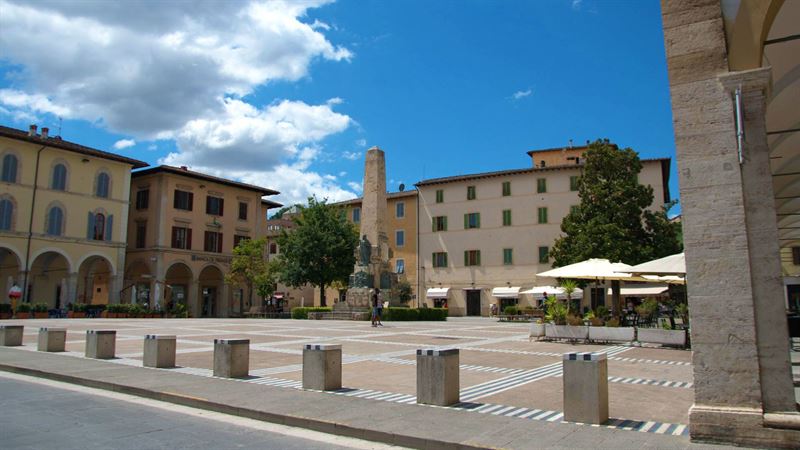
Top Ten Things to Do
Colle di Val d'Elsa lies in the heart of Tuscany, close to Siena, Florence and Etruscan Volterra, making it a handy base for city-based day trips. Colle di Val d’Elsa can also be a stepping-stone to the countryside, especially to the Chianti, including gentle meandering through wine country around Castellina and Radda. For medieval townscapes and towers, visit celebrated San Gimignano or quieter Monteriggioni, a hilltop town encircled by walls, and a former outpost guarding the northern borders of Sienese territory. Other activities include walking or cycling to Poggibonsi or a foray to a Chianti wine estate best-known for its thought-provoking sculpture trail.
-
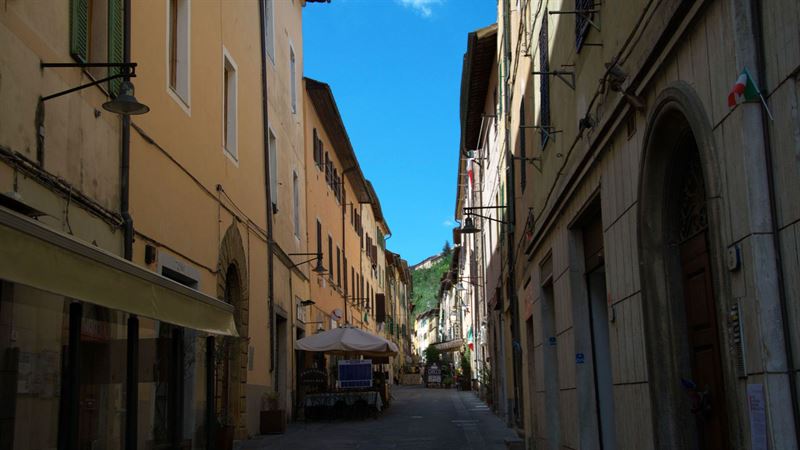
1. Meandering around Colle di Val d’Elsa
Colle di Val d’Elsa is not a classic Tuscan hilltown. Unlike many postcard-pretty Tuscan towns, this one has a long-established industrial tradition. From medieval times onwards, Colle diverted the River Elsa into canals to power its flour mills and paper mills. Paper-making brought prosperity in the 16th century, with iron-working and crystal gradually supplanting it in the 17th century. As a result, this is a commercial town that doesn’t depend on tourism. Even in the upper town, the shops are filled with fine glassware made in the factories down in the valley. From the lower town, admire the impressive modern fountain on Piazza Arnolfo de Cambio before heading to the well-preserved upper town. Apart from the Crystal Museum (see below), the lower town is devoid of interest. Built into the moated bastions, La Porta Volterrana is the medieval gateway leading to the far lovelier upper town, with its curious tunnelled alleys. The sinuous main street is lined by a stately procession of 16th-century mansions, only broken by a viaduct from which there are splendid views of the surrounding landscape. In this well-preserved medieval core, pass severe-looking mansions that were once the homes of the ruling families. Take in the medieval mood, delightful Duomo and city museum before pondering a specific crystalware trail (see below). If you’re more in the mood for a foray into ancient Tuscany, a small archaeological museum in the Palazzo Pretorio displays finds from the Val d’Elsa territory, ranging from Etruscan bronze mirrors to huge Hellenistic vases.
Museo Archeologico Ranuccio Bianchi Bandinelli
Piazza Duomo 42
53034
Colle di Val d'Elsa
Tel.: (+39) 0577 922954
www.museocolle.it
Tourist office
Colle Val d'Elsa: Pro-Loco (Upper Town)
Via del Castello 33 / b
Colle Alta
Tel.: (+39) 0577 922791
Punto Citta (Lower Town)
Piazza Arnolfo di Cambio 9
Colle Bassa
Tel.: (+39) 0577 921334
-
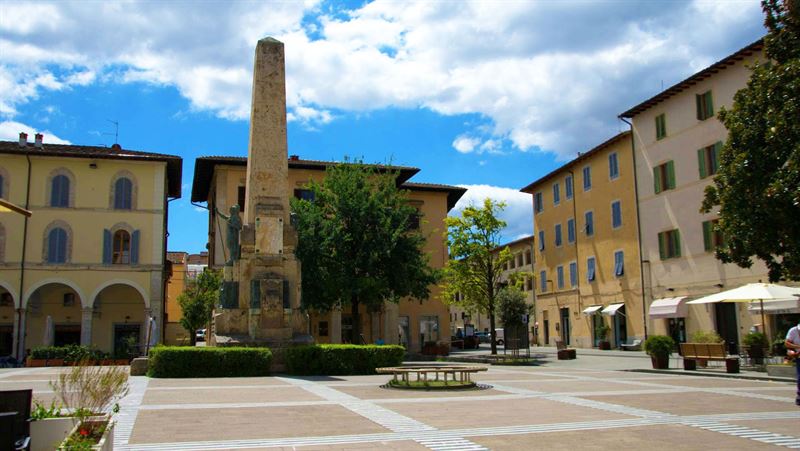
2. Colle di Val d’Elsa - `city of crystal’
The city is dubbed `crystal city’ (città del cristallo) for good reason. The crystal industry can cope with any design, from classic to cutting-edge, and offers intriguing insights into local history. Colle’s glassmaking industry supposedly dates back to 1331, when the town was an independent, self-governing entity. The real push came in the 17th-century, when the leading Usimbardi family re-introduced glass production in a systematic way. The town has never looked back. The glassmaking industry gradually switched to the production lead-glass crystal and, by the 19th century, Colle was dubbed the Bohemia of Italy for its crystal-making expertise. In 1820 the French glassmaker Francesco Mathis opened a crystal factory in the lower part of the village. Today, Colle di Val d’Elsa accounts for 95 percent of Italian crystal production and 15 percent of production worldwide. The first Sunday of every month you can see how glass is produced in an open-air demonstration. You might see glassmakers engraving wine goblets with intricate designs or see glass sculptures being moulded into the shape of a swan, snail, horse or fish, all made out of molten glass. The glass-making demonstration often takes place in the historical centre at via della Misericordia, close to the Cathedral, at around 3pm, but check with the tourist office.
The Crystal Glass Museum, set in the lower town, displays a collection of handmade crystal glass from medieval times to the 20th-century and also explains the manufacturing techniques. The museum is housed underground, underneath a former glass factory, where the furnaces were once sited. Known as the Museo del Cristallo, the museum is closed for refurbishment until 2019 but in the meantime some of the collection is still on display elsewhere in town. See some of the star exhibits in the Museo San Pietro (on 102 via Gracco del Secco 102) and in the Palazzo dei Priori (33 via del Castello). After learning a bit about the story of crystal, call into local shops to buy some glassware of your own.
Museo del Cristallo
via dei Fossi 8A
Colle di Val d'Elsa
(Colle Bassa/Lower Town).
Tel.:(+39) 0577 924135
www.museodelcristallo.it
Tourist Office
Colle Val d'Elsa: Pro-Loco (Upper Town),
Via del Castello 33 / b
Colle Alta
Tel.: (+39) 0577 922791
Punto Citta (Lower Town)
Piazza Arnolfo di Cambio 9
Colle Bassa
Tel.: (+39) 0577 921334
-
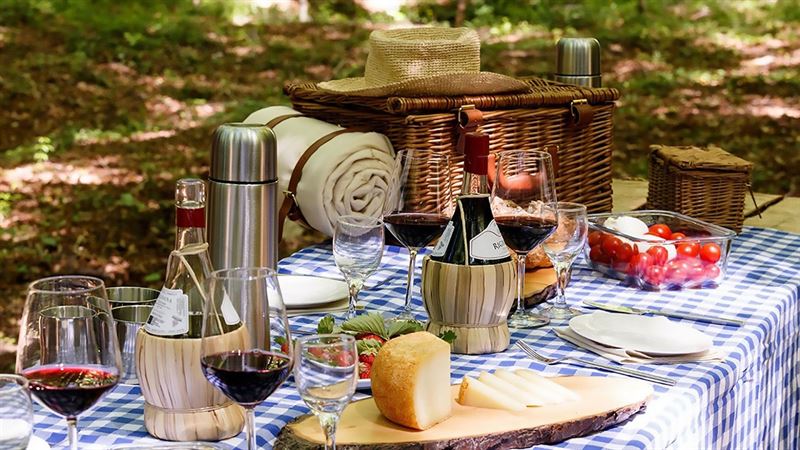
3. Sentierelsa - riverside ramble and summer swim
Put on your trainers or hiking boots and head to the turquoise River Elsa for a delightful ramble, particularly in summer. Known as the Sentierelsa, the River Elsa Path is fine for all but the smallest or least adventurous children. This riverside path hugs the river but crosses it at a couple of points. The route is sometimes rather narrow and winding and you do need to clamber over rocks at times. The rewards come in the form of lagoon-like pools, waterfalls, shady woods and peace and quiet. If you’re lucky, you might see a heron or kingfisher. Apart from one big waterfall, there are several smaller ones, a grotto and tempting pools en route. Known as the Cascata del Diborrato, this, the biggest waterfall, has a fifteen-metre drop, with the water cascading into a tem-metre-deep pool. This was, for many centuries, the typical bathing spot for the citizens of Colle di Val d’Elsa.
In the height of summer, consider bringing a picnic and going for a dip in the river. En route you also see signs of the early medieval hydraulic system that helped tame and channel the River Elsa. This system, known as `le Gore’ by the locals, was first used to power mills and later used to great effect in the early industrialisation of the town. A riverside plaque points out that the hydraulic works were remodelled in 1606, during the domination of the Medici Grand Dukes. You can join this easily accessible path immediately after Gracciano bridge (il ponte di Gracciano, also called il ponte di San Marziale), to the south of Colle di Val d’Elsa. The path follows the river bed for 2km to the San Giorgio district. This route is now protected, part of the River Park of the Upper Val d'Elsa. Apart from the riverside path, it takes in the whole area stretching from Ponte Santa Giulia to Ponte di Spugna, including the so-called `Caldane’, thermal springs which date back to the time of the Etruscans. There’s ample parking near the start of the hike. If you’re interested in more than swimming, book a nature ramble through the tourist office.
Sentierelsa description: https://www.visitcolledivaldelsa.com/en/elsa-river-trail-sentierelsa/
Guided Sunday walks bookable through the Colle di Val d’Elsa tourist office Pro Loco Colle di Val d'Elsa.
Tel: (+39) 0577 922791
Web: turisticocolle@tiscali.it -
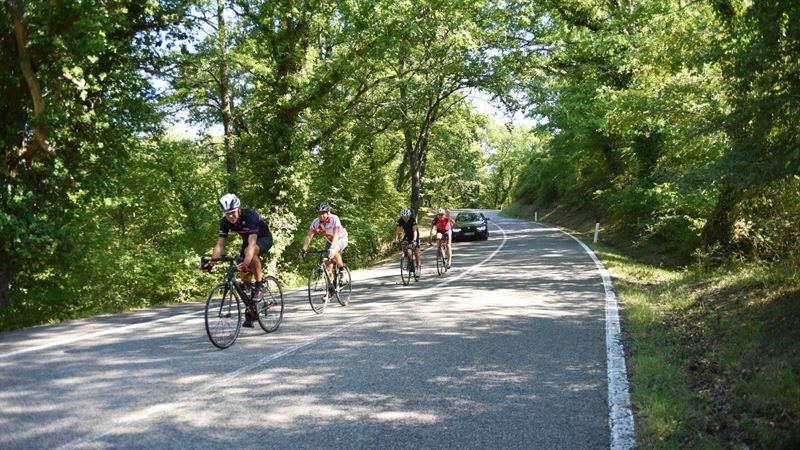
4. Cycling route from Colle di Val d’Elsa to Poggibonsi
The Val d’Elsa is cycling country and works for both experienced cyclists and beginners. The scenery spans vineyards, cypress-studded hills, sun-drenched olive groves and fields of summery sunflowers. Consider hiring a bike and setting off on an exploration of quaint hamlets, hidden chapels and pretty villas, including routes to Monterrigioni or San Gimignano.
Colle di Val d’Elsa’s easiest route works for all ages and can be experienced as a walk or a cycle ride. This popular cycling path connects Colle di Val d’Elsa to Poggibonsi, the two biggest towns in the Val d’Elsa. The novelty of the route, inaugurated in 2011, was to site the trail along disused railway tracks, and to restrict it to pedestrians and cyclists. The little-used branch line was once connected to the Siena-Empoli rail route but was finally closed down in the late 1980s. Now repurposed as a trail for cyclists and walkers, the cycle path, at just over 7km, is flat, easy and peaceful so makes for a pleasant walk or short cycle ride. The path follows the River Elsa and meanders through the countryside, with benches and information panels sited at scenic spots along the route.
A far longer cycling itinerary connects Colle di Val d’Elsa and Monteriggioni, with a choice of routes. One 40-km route leads through vineyards and olive groves, taking a mixture of paved roads, country lanes and dirt tracks. It covers varied terrain and crosses the Val d’Elsa, taking in the Romanesque abbey of Abbadia Isola en route to medieval Monteriggioni, tucked into its 13th-century walls. The alternative route, often used by local cyclists for training rides, winds up the wooded hillsides around Monte Maggio, and offers lovely views to Siena. Even lovelier is the 42-km Colle di Val d’Elsa to San Gimignano route, which is best done in reverse. The first option follows country lanes up and includes a few short off-roading sections. Riders can admire low-slung hills swathed in vineyards, olive groves and pockets of woodland. It is a landscape virtually unchanged since medieval times. The alternative route is a much tougher, more exhilarating ride with great views over rolling hills and three provinces.
Colle di Val d’Elsa to Poggibonsi cycle track (Italian only): https://sentieridicioccolata.it/la-ciclabile-del-trenino-poggibonsi-colle/
Address: Gippo bike (bike hire including electric bikes):
Localita Pian dell’Olmino 77
53034 Colle Val d’Elsa.
Tel: (+39)0577 904405
Web: www.gippobike.it -
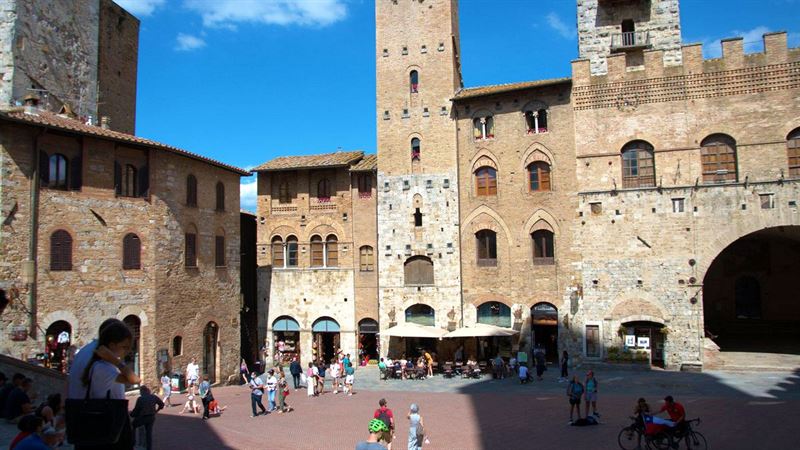
5. San Gimignano – medieval Manhattan
San Gimignano is only 14 km north-west of Colle di Val d’Elsa so makes a worthwhile trip to see one of the medieval wonders of Tuscany. Given its spectacular setting, San Gimignano is one of the most touristy towns in Tuscany but manages to rise above the masses. With its moody medieval towers and walls, the town is one of the symbols of Tuscany. Building a lofty tower-house represented one-upmanship, medieval-style. The tower-studded skyline is one of the most spectacular sights in Tuscany. In its heyday, the city had a total of 72 towers, only 14 of which remain. Tower-houses were castle-residences serving as both warehouses and fortresses. A plague in 1348 wiped out much of the local population and the town slumbered as a backwater for centuries. The result is a medieval time capsule, even if the town is far from slumbering today. Its over-popularity and sometimes inflated prices are the only downsides but shouldn’t deter you from joining the throng.
The towers alone make a visit to this medieval time capsule worthwhile. Make time for Torre Campatelli, a true tower-house you can actually visit. This intriguing tower-house was home to the last resident of an illustrious Florentine clan. Apart from the medieval cityscape, the main sites are churches and public buildings. The best are congregated around the triangular Piazza della Cisterna and Piazza del Duomo. Here, the Palazzo Comunale is the forbidding fortress at the centre of city life since the days when Dante came on an ambassadorial visit from Florence.
Take a short walk along the city walls to la Rocca, the 14th-century fortress, before leaving town. This semi-restored fortress enjoys views over terraced gardens and olive groves winding down to the Vernaccia vineyards. The fortress is home to an enoteca, a wine-tasting experience, which traces the history of Vernaccia, the town’s most famous wine. You can even book a Vernaccia master class through the tourist office. If staying for longer, escape the crowds on a rural walk along stretches of the Via Francigena pilgrimage route outside San Gimignano. This is best booked through the tourist office. See our full San Gimignano guide for more.
Address: Museo Vernaccia
La Rocca
via della Rocca
San Gimignano
Tel: (+39)0577 941267
Web: www.sangimignanomuseovernaccia.com -
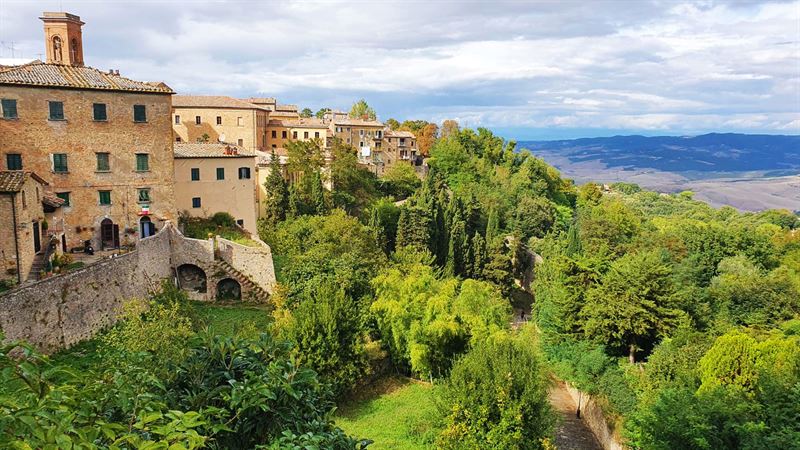
6. Bewitching Volterra
Volterra lies 28 km west of Colle di Val d’Elsa and represents a magical outing. Volterra is beguiling, less touristy than San Gimignano, Cortona or Pienza but arguably just as compelling. Perched on a majestic, windswept ridge overlooking the Sienese hills, Volterra commands its setting and remains the most Etruscan of Tuscan cities. The Porta all’Arco, the Arched Gate, is the best-preserved Etruscan gateway in Italy, dating from the 4th century BC. Partially remodelled by the Romans, the gate still rests on massive Etruscan bases and is the only surviving part of the Etruscan walls. Volterra displays some of the best Etruscan art outside Rome, with the finest treasures in the Museo Etrusco Guarnacci. Founded in 1761, this is one of the oldest public museums in Europe and is easily the city’s finest museum. The funerary urns and alabaster sarcophagi run the gamut of Etruscan demonology and Greek mythology, featuring sea monsters, Greek gods, beaked griffins and sirens. Any walk through Volterra reveals Roman remains, the Etruscan city the Romans adapted to their tastes. Etruscan Velathri became Volterrae, an important Roman municipality when Rome annexed Etruria in 351 BC.
Beyond Etruscan Volterra is the visual magnificence of the medieval city. Piazza dei Priori, the town’s set-piece square, is proof of Volterra’s rich medieval heritage, with its cluster of noble palaces. The square is dominated by the lofty Palazzo dei Priori (1208), the oldest town hall in Tuscany and supposedly the model for Florence’s Palazzo Vecchio. To the south of Piazza dei Priori is Piazza San Giovanni, the religious centre of Volterra. Crowning the square is the 12th-century Duomo, with its Pisan Romanesque façade. Renaissance buildings blend in surprisingly gracefully with the medieval Volterran houses. Palazzo Incontri-Viti is an impressive mansion that also feels like a private home. It began as the home of a discerning alabaster merchant and his heirs are still in residence. Each salon is grander than the next, adorned with art, porcelain and alabaster, a reminder that the palace once belonged to one of Volterra’s richest citizens. After exploring the patrician palaces, retreat to Le Cantine del Palazzo, the Etruscan-Roman cellars below Palazzo Incontri-Viti, for a drink or a meal in a cavern-like setting with a Roman cistern as decoration.
No visit to Volterra is complete without seeing an alabaster-carving workshop. As everything in Volterra, even alabaster-carving is an Etruscan legacy. It is one of the many gifts the Etruscans have passed onto their descendants in this most Etruscan of cities. The ancient craftsmen made great use of alabaster from the 5th century BC onwards, primarily for their beau¬ti¬ful¬ly sculpt¬ed funerary urns. In the local museums and workshops you’ll come across bowls, urns, medallions, religious artefacts, candleholders, lamps, vases and Neoclassical sculpture. classic Tuscan cuisine. Ender your stay in a vaulted Volterra inn. Tuck into zuppa volterrana, a thick vegetable and bread soup, or trippa alla volterrana (tripe cooked with tomato, sausage and herbs). Other hearty dishes include pappardelle di lepre (pasta ribbons in hare sauce) or the same pasta with wild boar (cinghiale). For more on the city, see our full Volterra guide.
Volterra tourist office:
T: (+39) 0588 87257
www.volterratur.it
-
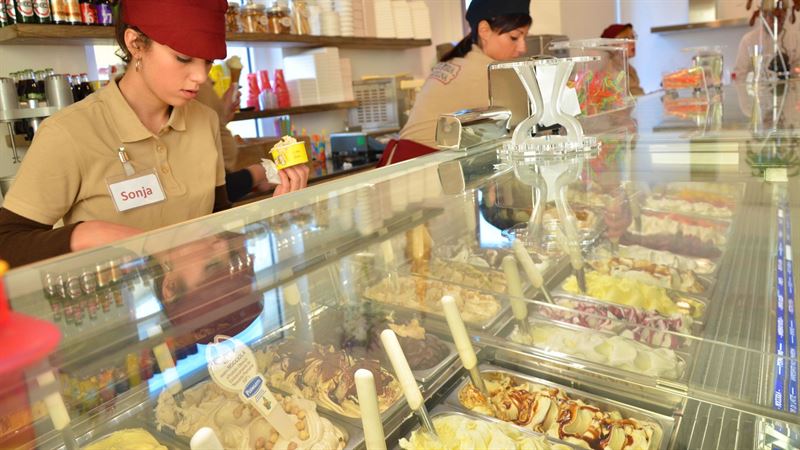
7. Taste of Chianti country
Castellina in Chianti, a gateway to this celebrated wine country, lies 20 km east of Colle di Val d’Elsa. In town, explore the Archaeological Museum to see finds from Etruscan tombs, including an amphora depicting drinking and feasting, showing that wine was a sign of status, drunk at rituals and ceremonies. Even though the tombs were built nearly 3,000 years ago, the creators feel very much like ourselves. Climb to the tower-top walkway to enjoy sweeping views over the Chianti mountains, San Gimignano and the Val d’Elsa. Wander down via delle Volte, a quaint stone-vaulted street built into the side of the hill.
Consider your first wine-tasting at an enoteca as Castellina is awash with Chianti Classico. The trademark on bottles of Chianti Classico is the Black Rooster (or Black Cockerel), the historic symbol of the Chianti Military League. In the late 13th century, Castellina was the first site of the Chianti League, a group of three Florentine feudal castles. Call into L’Antica Trattoria alla Torre for lunch. Set on the main square, this old-fashioned inn serves Tuscan treats on a summery terrace. Tuck into the Florentine T-bone steak, grilled meats and Pecorino cheeses, all washed down with Chianti Classico wines, of course.
After lunch, devour delicious ice cream at Gelateria Castellina, known for its experimental ices. The flavours range from ricotta and fig to chilli and chocolate or lemon and kiwi fruit. There’s also the owner’s favourite creation, cantuccini and Vin Santo: almond biscuits with sweet Tuscan wine. There’s no escaping wine in the Chianti. Before leaving, stock up on Tuscan foodstuffs, including cheeses, biscuits and cured meats. For tips on Chianti culture, wine-tasting, dining or shopping suggestions, see our guide to Castellina in Chianti but also check our general Chianti guide. You could continue exploring Chianti wine country in Radda in Chianti, just east of Castellina.
Address: Castellina Archaeological Museum
Piazza del Comune 17
53011
Castellina in Chianti
T: (+39) 347 679075 & (+39)0577 742090
www.museoarcheologicochianti.com
L’Antica Trattoria alla Torre
Piazza del Comune 15
53011
Castellina in Chianti
T: (+39) 0577 740236
www.anticatrattorialatorre.com
Gelateria Castellina
Via IV Novembre 47
53011
Castellina in Chianti
T: (+39) 0577 741337
www.gelateriadicastellina.it/ -
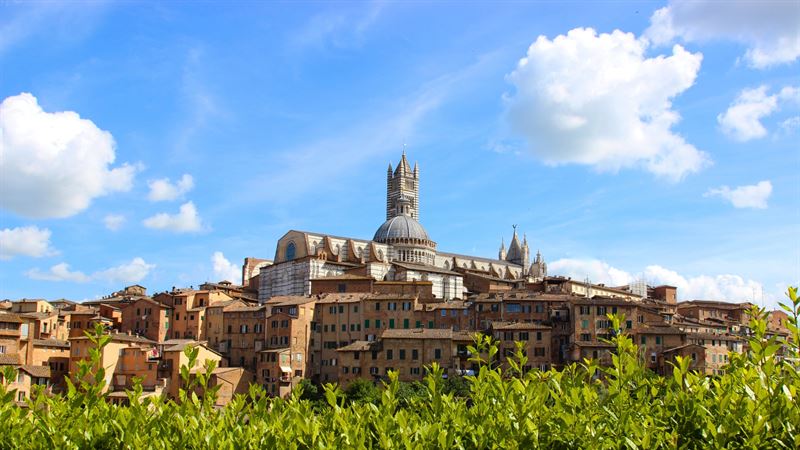
8. Day trip to Siena
Siena lies 26 km south of Colle di Val d’Elsa and makes a magical day trip. As a Gothic city built on a human scale, Siena is effortlessly civilised and at ease with itself. All roads lead to Il Campo, the beguiling, shell-like central square, shaped like an amphitheatre. Sit at a terraced café on the sloping side of the square and spot the division of the paved surface into nine segments, recording the wise Council of Nine who governed Siena from the mid-13th century to the early 14th. Consider climbing the slender Torre del Mangia, with sultry views over a pink piazza and Siena’s rooftops, even if the views from the Cathedral rooftops are even better.
After an early lunch, a leisurely stroll leads to the Duomo, Siena’s pinnacled Gothic cathedral. The facade is a riot of green, pink and white marble, like a glorious iced cake. Siena Cathedral and the Cathedral Museum should be seen as one entity as they share several spaces. The Museum displays Pisano’s original statues for the façade along with Siena’s best-loved work, Duccio’s Maestà, the Virgin Enthroned. For many visitors, equally impressive is the rooftop walk, known as the Panorama from the Unfinished Façade. These are arguably the finest views of Siena. Facing the cathedral is the Spedale di Santa Maria della Scala, the most extraordinary building in Siena. It began as a hospital a thousand years ago and continued as one until it was reborn as a magnificent museum in recent years. In medieval times, it was always far more than a hospital. The art-studded complex embraces a former pilgrims’ hostel, an orphanage, frescoed churches and granaries.
Don’t let Siena’s art-studded museums blind you to the beauty of the backstreets. Here, the city history unfurls like a medieval banner. Walkable Siena has well-preserved walls and inviting gateways. Wind through a tangle of medieval streets and stumble across secret courtyards, fountains and surprisingly rural views. Check our Siena guide to see what appeals most.
Siena tourist office, Spedale di Santa Maria della Scala, Piazza Duomo (it can advise).
T: (+39) 0577 280551
www.terresiena.it
Centro Guide (guided walks)
T: (+39) 0577 43273
www.guidesiena.it
-
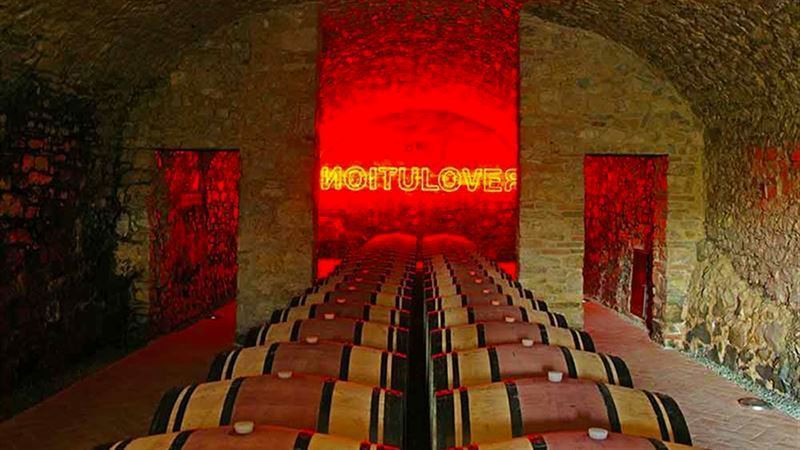
9. Castello di Ama for contemporary art
Castello di Ama, 39 km east of Colle di Val d’Elsa, combines a wine estate with contemporary art and sculpture. Castello di Ama is actually not a castle but a hilltop estate and villa restaurant, doubling as a centre of contemporary art. This leading Chianti Classico producer is a working wine estate known for its superb, full-bodied reds. At first sight, the Castello is yet another traditional borgo, a stone-built hamlet nestling in the Chianti hills. Slowly, it becomes clear that wine, food and contemporary art are all part of the picture. This was the wine estate that entranced the Obamas on their post-presidential tour of Tuscany.
The wine is master-minded by Tuscan Marco Pallanti, regularly crowned wine-maker of the year, with wines often in the world’s top ten lists. The estate’s San Lorenzo is a Chianti Classico gran selezione DOCG, a category considered the finest expression of its kind. The 80 hectares of vineyards cover different terroirs, from rocky schist to clay and gravel, with another 40 hectares given over to olive groves. The olives end up in the estate’s extra-virgin DOP Chianti Classico olive oil.
The grounds are home to a world-class collection of contemporary art installations, the ambitious collection known as Castello di Ama per l’Arte Contemporanea (Castello di Ama for Contemporary Art). The sculptures respond to the setting, much as the wines do, and are being added to each year. Castello di Ama repurposes original buildings, such as an on-site church and wine cellar, to showcase art installations in a striking way. The art is hard-core contemporary rather than soothingly pastoral. The site-specific contemporary art is commissioned from artists of the calibre of Anish Kapoor, Daniel Buren, Louise Bourgeois, Michelangelo Pistoletto, Hiroshi Sugimoto and Lee Ufan. The most engaging and accessible work is the show-stopping mirrored installation by Daniel Buren that reflects the rolling hills. A Louise Bourgeois sculpture entitled `Topiary’ is ingeniously hidden beneath a grate in the wine cellar floor and depicts a female form flowering into a male phallus. `Aima’, a thought-provoking Anish Kapoor light installation, illuminates the estate’s tiny chapel. Book a wine tour and tasting, come for lunch, visit the sculpture park, or simply visit the estate’s Enoteca to sample and buy the wines, olive oil and nature-inspired home fragrances.
Address: Castello di Ama
Localita Ama
53013
Gaiole in Chianti
Tel: (+39)0577 746069 (wine estate) (+39)0577 746191 (restaurant)
Web: www.castellodiama.com -
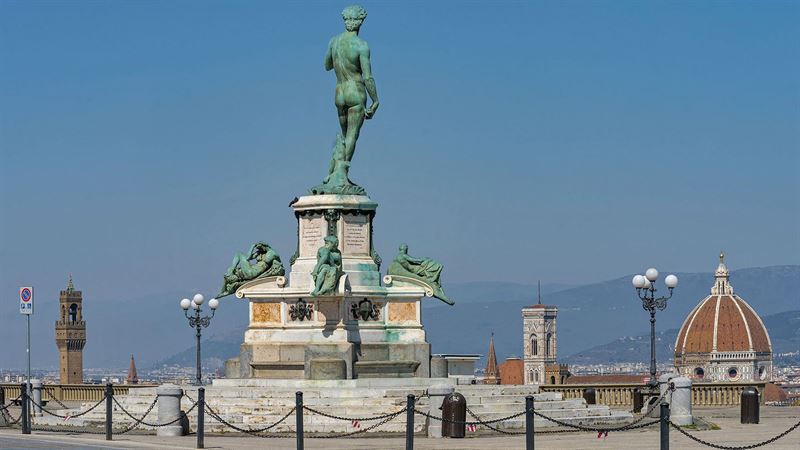
10. Art-filled Florence
Florence, 54 km north of Colle di Val d’Elsa, makes for a culturally-packed outing. Despite devouring the checklist of must-see sights, steer clear of suffocating under the weight of treasures. Allow time for aimless wandering. Beyond the selfie sticks and statuary awaits a funky foodie haunt with sleek cafes, superb cooking and seriously edible markets. Florence is not fusty. Nor has the greedy city lost its gutsy Tuscan soul: traditional inns still serve earthy peasant fare, including macho steaks. Beware of trying to do too much on a day trip. Balance visits to galleries with wanderings in search of the perfect trattoria or the perfect view.
Begin in Piazza della Signoria, the city’s grandest square, with its copy of Michelangelo’s David and, beside it, the crenellated Palazzo Vecchio, with a well-presented collection. After a coffee at Rivoire, brace yourself for the Uffizi Gallery, the world’s greatest collection of Italian art. As such, the gallery is both a feast for the senses and an indigestible banquet so try and plan your visit in advance or even book a time slot online. After lunch, visit the Duomo, the biggest building for miles around. It is still Brunelleschi’s Renaissance dome that defines Florence. Out of respect for Brunelleschi’s achievement, the city forbade the construction of any building taller than the Duomo.
Clear your head in the Oltrarno, across the river Arno, where the Giardino Boboli (Boboli Gardens) act as an excellent antidote to the suffocating splendours of the Pitti Palace. The Medici dynasty created these statuary-encrusted gardens, which became the model for Italianate gardens for centuries to come. Before dinner, explore the Oltrarno neighbourhood's craft heritage on the so-called Left Bank of the city. This bohemian district is studded with stylish bars and buzzy inns interspersed with antique shops, jewellery-makers, picture-restorers and bijou art galleries. Check our Florence guide to see what appeals most. If visiting a number of museums, consider buying a Firenze Card online (www.firenzecard.it) and also book a time slot at the Uffizi Gallery.
-
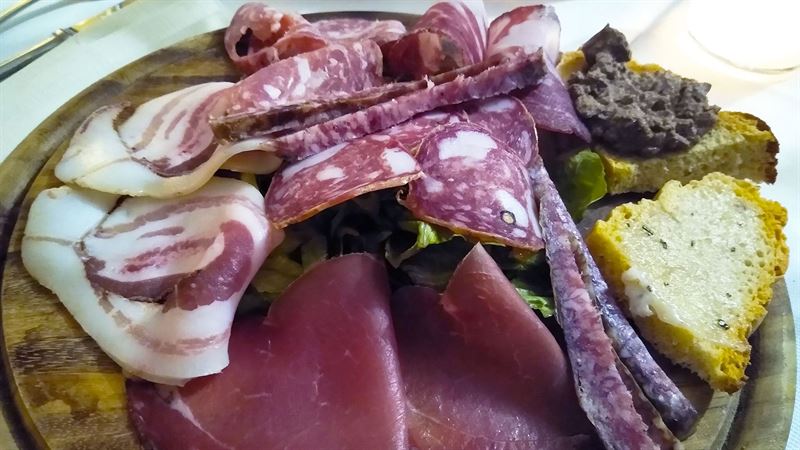
Eating & Drinking
Colle di Val d’Elsa is a foodie hotspot, helped by its closeness to both the Chianti and San Gimignano. As a result, the area abounds in good restaurants, from homely inns to gourmet restaurants offering wine-pairing options. The Chianti Colli Senesi is the biggest Chianti zone, running from San Gimignano to Colle di Val d'Elsa and Siena, and onto Montalcino and Montepulciano. It’s a fresh young red wine that goes well with cured meats, such as cinta senese, as well as with bruschetta. It also goes with soups, mushroom sauces and game, along with tripe, ribollita, grilled and roast meats, plus most cheeses and cured meats. These include the strong-tasting prosciutto toscano, made from cinta senese, the prized black-and-white pigs. This is an ancient Tuscan breed, linked to Sienese territory, and is the only surviving Tuscan breed. Other prized cured meats include hand-salted capocollo, finocchiona, flavoured with fennel, and soprassata, which has to be eaten fresh. The cheeses are equally varied and can be eaten with unsalted Tuscan bread and accompanied by walnuts, honey and local jams. The Pecorino comes in many forms, from mild to pungent-smelling. Pecorino wrapped in fig-leaves or walnut leaves is fairly pungent while strong-smelling Pecorino di Fossa is even more powerful, as is the Pecorino made with black truffles. The cylindrical-shaped Marzolino cheese, produced between March and August, can be eaten soft and young or spicier if matured on spruce leaves. Pastries, biscuits and cakes are plentiful in the area, from typical cantucci biscuits to spicey panforte, a Sienese-style cake. Alternatives are castagnaccio, made with chestnut flour, and cavallucci biscuits studded with candied fruit.
-
Buekke Gelateria
This ice cream parlour, considered the best in the Val d’Elsa area, often introduces new flavours but always with the same quality.
Address: Fratelli Bandiera 81
Frazione Gracciano
53034
Colle di Val d'Elsa
Tel: (+39) 0577 1793415 -
Ristorante Arnolfo
Set in an airy mansion, this pricey two-Michelin-starred restaurant is made for special occasions. Gorgeously presented Tuscan-inspired dishes are interpreted in creative, gourmet-style fashion. Typical dishes include: quail’s egg in meat broth; saffron risotto with country herbs; cinta senese suckling pig served on a bed of lentils and prune; and cappelletti pasta in a rich Chianti sauce. Expect creative menus (including vegetarian options) from chef Gaetano Trovato in a price range varying from €120-€160 without wine.
Address: Via XX Settembre 50
53034
Colle di Val d’Elsa
Tel: (+39) 0577 920549
Web: www.arnolfo.com -
Ristorante L'Astronave
This straight-forward, traditional Tuscan restaurant is fuss-free, fairly-priced and reliable. It serves barbecued meat, big T-bone steaks, along with hearty pasta dishes (such as tagliatelle and a meaty ragu sauce) and a good range of vegetable dishes.
Portionas are generally large while the service is friendly.
Address: Localita Selvamaggio 80
53034
Colle di Val d'Elsa
Tel: (+39) 0577 920116 -
Ristorante Il Cardinale
This rustic-elegant stone-faced restaurant is set in the former cellars of the Relais de la Rovere villa. Expect sophisticated regional Tuscan cooking presented in a creative way. The prices reflect the upmarket setting and modish presentation, even if the restaurant is run independently of the villa-hotel.
Address: Relais de la Rovere
via Piemonte 10
Localita la Badia
53034
Colle di Val d'Elsa
Tel: (+39) 0577 924696
Web: www.relaisdellarovere.it -
Molino al Moro
This romantic, old-world restaurant occupies an old mill just north of town. As well as Tuscan classics, such as cured meats, the inn delivers more sophisticated, lighter, seasonal dishes, all mid-priced. Favourites include the truffle dishes and the home-made ice creams. Equally delicious are the following dishes: Parmesan flan with truffle cream sauce; risotto made with a pungent Pecorino di Fossa cheese and Chianti wine; and the tagliatelle pasta with artichokes and a saffron sauce. The presentation is as elegant and enticing as the vaulted stone setting, with views through glass of the running river below the mill.
Address: Via della Ruota 2
53034
Colle di Val d'Elsa
Tel: (+39) 0577920862
Web: https://www.molinoilmoro.com/ -
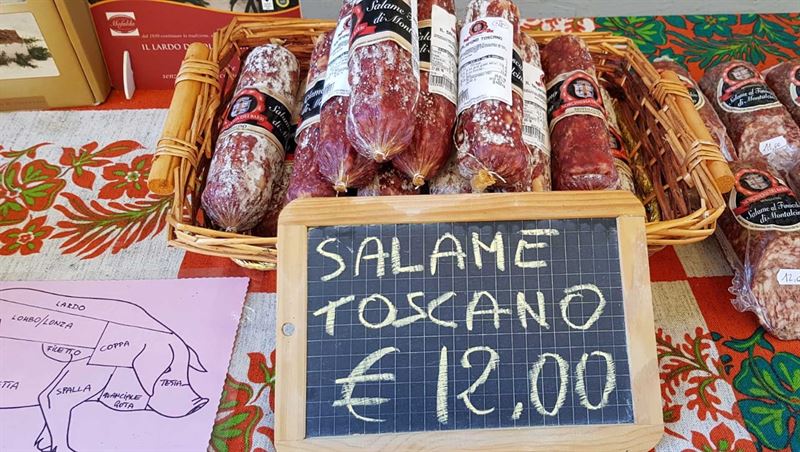
Shopping
As a traditional market town, Colle holds a Friday market on Piazza Arnolfo di Cambio in Colle Bassa, the lower town. The market sells foodstuffs, household goods, clothes and shoes. The same square welcomes a farmers’ market, il Mercatale della Valdelsa, every fourth Saturday of the month. In local wine and food shops buy Chianti Colli Senesi wine, along with typical pastries, biscuits and cakes (see Eating & Drinking for more). Colle di Val d’Elsa is also something of a centre for arts and crafts in general. Above all, Colle is known as largest producer of crystal and fine glass, and there are plenty of shops selling it.
-
La Grotta del Cristallo
This crystal shop sells everything from tableware to crystal chandeliers and hand-crafted jewellery. Champagne flutes, whiskey glasses, picture frames or perfume bottles - this is a treasure-trove for quality crystalware.
Address: Via del Murolungo 20
53034
Colle di Val d'Elsa
Tel: (+39) 0577 931879 (workshop) & T: (+39) 0577 924676 (showroom)
Web: www.lagrottacrystal.com -
Ceramiche Manufactum
Set in the historic centre, this ceramics workshop sells hand-painted gifts, from ceramic art to brightly-painted bowls and trays, all made by a husband-and-wife team of potters. They also run short, half-day courses.
Address: Via del Castello 32
53034
Colle di Val d'Elsa
Tel: (+39) 0577 922400
Web: www.manufactum.it -
Parking
As often in Tuscany, Colle di Val d’Elsa is a town of two parts: Colle Alta, the old historical center (centro storico) crowns the hill, with Colle Bassa, the modern part of town, spread out in the valley below. If you arrive by car, there is ample parking just below the historical centre. Follow signs to Volterra and the winding road will take you up to the car park, just below the old part of town. Built into the medieval walls, the monumental Porta Nuova gateway marks the entrance to the old town. While you can walk up the hill, there is also a public lift that connects the lower and upper town and opens onto a lovely terrace. If arriving on foot from the lower town, you reach the lift by walking along Piazza Arnolfo and via dell’Aringo.
Most Tuscan towns operate a strict ZTL system, a Limited Traffic Zone. This means that the Centro Storico (historic centre) is essentially closed to traffic, particularly for non-residents. Cars will need to be left outside the walls.
Advice on ZTLs: You may see other cars crossing the ZTL boundary (Limited Traffic Zone) and assume you can proceed. Not so. The drivers crossing into the ZTL zone will probably be locals and have residents’ permits. Visitors do not so are liable to fines. Zones are monitored by cameras, so tickets are issued immediately and automatically, as soon as (and each time) the car crosses the ZTL boundary. For more, see www.comune.colle-di-val-d-elsa.it -
Getting there & getting around
By car: If arriving in Colle via the Superstrada, take the Colle di Val d’Elsa Sud exit and drive through the modern town towards the medieval upper town. As for exploring, Colle di Val d’Elsa is central and convenient for key Tuscan towns and attractions, at least by car. Volterra lies 28 km west of town while Castellina in Chianti lies 20 km east. Instead, Siena is 26 km south; Certaldo is 25 km north; and Florence lies 54 km north of Colle di Val d’Elsa.
By train and bus: there’s no direct rail connection from Siena to Colle di Val d'Elsa so you need to take the train to Poggibonsi and then catch a bus to Colle, which is a saga. Instead, the local bus network is more convenient, especially if you want to leave the car in Colle on occasions. The bus network can take you to San Gimignano, Siena or even Florence. For more on the local bus network, see Autolinee Train website (www.trainspa.it)

























